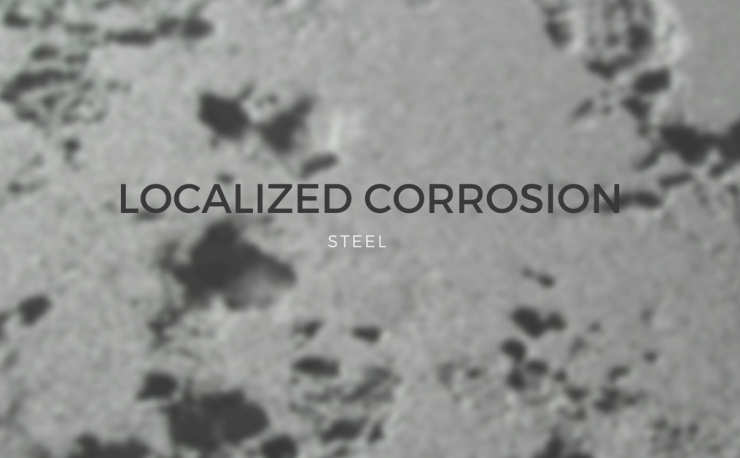
After talking about general corrosion in our previous blog post, today we would like to focus on another type of corrosion. In the specific, we shall treat, about localised corrosion.
What is localised corrosion?
Contrary to general corrosion, the localised corrosion only occur on certain parts of the metal surface. So, only locally. This corrosion is difficult to be monitored and it has a high feed rate. There are different forms of corrosion as
- galvanic corrosion
- crevice corrosion
- intergranular corrosion
- pitting corrosion
- stress corrosion cracking (alias SCC)
- fatigue cracking
- erosion cracking
- for hydrogen embrittlement.
Localized corrosion such as pitting, develops in two stages: ignition and propagation. The first stage happens superficially, just where the oxide is weakened and defective. In the second stage, however, the metal dissolves right in areas where the oxide has been damaged.
There are several factors involved in the ignition stadium:
- presence of inclusions and precipitated phases of metal
- strain hardening degree of metal
- chemical composition of the environment
- corrosion potential.
What may be due to localised corrosion?
Localised corrosion can appear in different situations as:
- in the presence of a non-homogeneous environment (i.e. difference in oxygen content or potential variations)
- when different materials are coupled (process called galvanic contact corrosion)
- in the presence of
- area shielded by deposit, interstices or crevices
- turbulence phenomena, abrasion, cavitation, fretting
- depassivanti agents (resulting in pits and pinholes).
How to prevent this type of corrosion?
It is possible to intervene only at certain stages of this corrosion, for example the ignition phase. Avoid enabling this phase, in fact, turns out to be crucial. If it triggers the pit, in fact, hardly you can stop it from spreading. But what are the methods to prevent corrosion?
- intervene on the environment (e.g. check the concentration of chloride ions and remove dissolved oxygen)
- choose the suitable material to increase corrosion resistance (e.g. using stainless steels with an high content of chromium, molybdenum, nickel, tungsten, nitrogen)
- use the cathodic protection to prevent ignition (decreasing the potential of corrosion than breakdown)
- use corrosion inhibitors.
Looking for stainless steel fasteners, fittings, marine accessories or fasteners for photovoltaic systems? Please visit our website. Sign up to our e-commerce to view real-time prices and availabilities of all our products.
Click hereDo you want to read other posts? Continued here.




